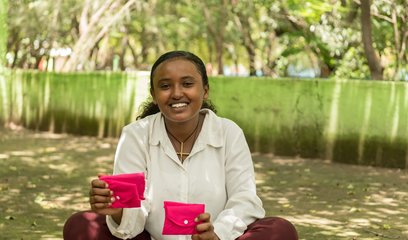Around the world, millions of people live without access to the safe menstrual products they need, putting their health and safety at risk. This is period poverty.
When people can’t manage their period safely, they may miss school, work or other activities. Some might be forced to use unhygienic items or unsafe practices if they have no other options, which can lead to sickness and even death.
This page explores the causes and consequences of period poverty, what you can do to help end period poverty – and how CARE works with communities to fight menstrual stigma and make sure everyone has access to the period products and facilities they need.
What is period poverty?
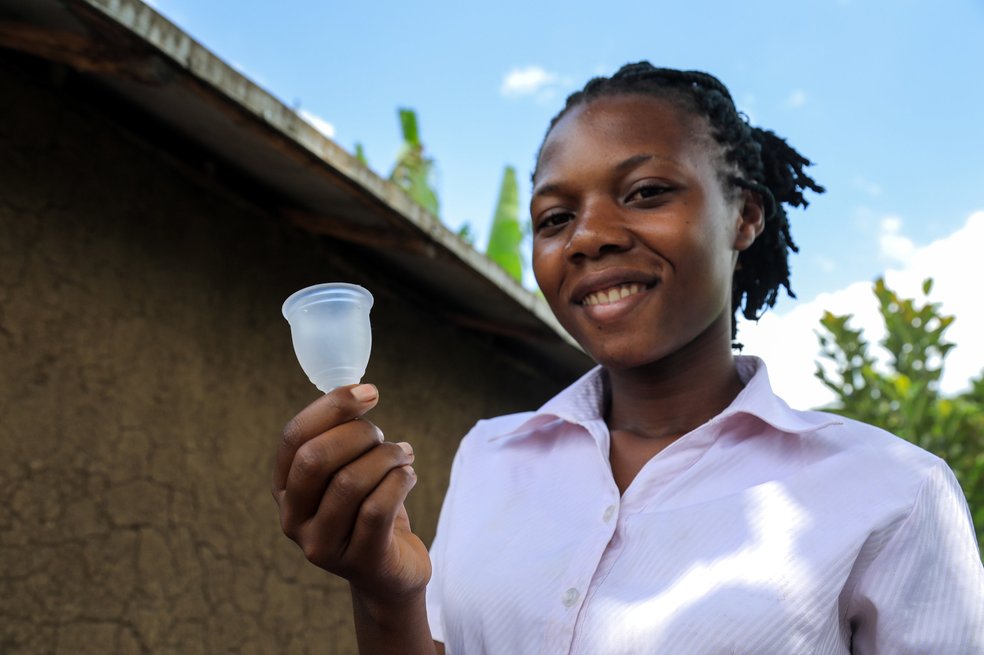
Period poverty means not being able to afford or access the menstrual products and sanitation facilities needed to manage periods with dignity. It is often linked with lack of education about menstruation and ongoing stigma.
Imagine getting your period – but having no pads or tampons, and no clean or safe toilet facilities. Instead, you’re forced to use rags, newspapers or even leaves.
This is the reality for over 500 million women and girls around the world today who are living in period poverty.
Period poverty statistics
-
1.8 billion
people menstruate every month
-
500 million
women and girls lack access to menstrual hygiene facilities
-
1.5 billion
people do not have basic sanitation services
Did you know that:
- Every month, roughly 1.8 billion people around the world menstruate. Source: Unicef
- Every person born female spends an average of seven years of their life menstruating. Source: Unicef
- Over 1.5 billion people still do not have basic sanitation services, such as private toilets or latrines. Source: WHO
- Over 500 million women and girls worldwide lack access to facilities for menstrual hygiene. Source: World Bank
- In sub-Saharan Africa, around 1 in 10 girls miss school during their periods. Source: World Bank
- In Ghana, women on the minimum wage spend one in every seven dollars they earn on sanitary pads. Source: BBC
- In Kenya, around 65% of women and girls cannot afford menstrual products. Source: UN
- In the UK, one in five people who menstruate struggle to afford period products. Source: Action Aid
What causes period poverty?
Period poverty is driven by multiple, overlapping factors including:
- High cost of period products. Pads and tampons are unaffordable for millions of people worldwide. This is often due to gender-blind policies and tax laws, such as the ‘pink tax’ on feminine products.
- Lack of availability. In many regions, especially during conflict or crisis, menstrual products and sanitation facilities are hard to come by or simply do not exist.
- Stigma and shame. Menstruation is still taboo many communities. Fear and embarrassment often prevent women and girls from seeking products, facilities and support.
- Lack of education and awareness. Without menstrual health education, many are unprepared for their first period and are unaware of how they can manage their periods safely and comfortably.
- Structural inequality: Health systems and policies often ignore menstrual needs, since decision-making has historically excluded women’s voices.
Who is affected by period poverty?
Period poverty is a global issue. From the UK to some of the world's most marginalised communities, anyone who menstruates can be affected.
- Those in low-income households are most likely to struggle.
- People in emergency settings, such as refugee camps, face even greater barriers.
- In countries like Kenya and Ghana, the vast majority are unable to afford period products.
- Even in wealthier nations, including the UK, many still experience period poverty.
What are the consequences of period poverty?
Girls from our school used to struggle during menstruation. Most girls did not have sanitary [products], so it was common for some to miss school for even over a week. Most girls preferred to stay at home during their period than face the shame.” -- Jennifer, Ethiopia
Education and missed opportunities
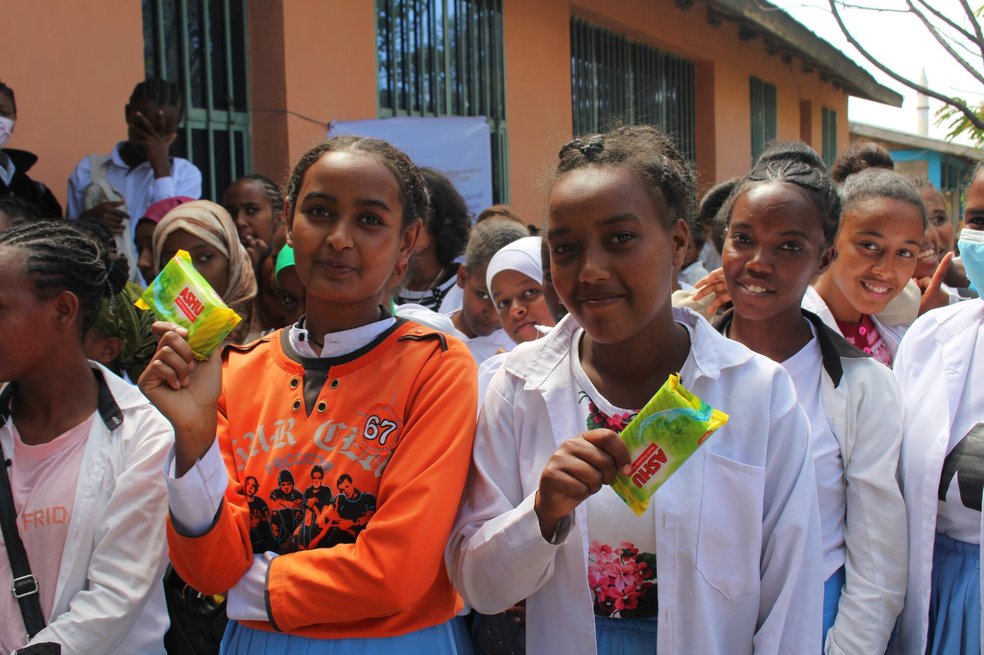
Millions of women and girls miss school or work each month due to inadequate facilities or lack of period products. This affects long-term education outcomes, career opportunities and economic independence.
Health impacts
Using unhygienic alternatives like cloths, newspapers or leaves can cause infections and other health problems. In extreme cases, it can be life-threatening. Period poverty also impacts mental health, leading to anxiety, stress and fear of leaks or embarrassment.
Shame and stigma
When people cannot safely and effectively manage their period, menstruation becomes a source of fear, shame and exclusion. Girls may avoid school or social life altogether, reinforcing cycles of inequality.
How do people manage their periods in a crisis?
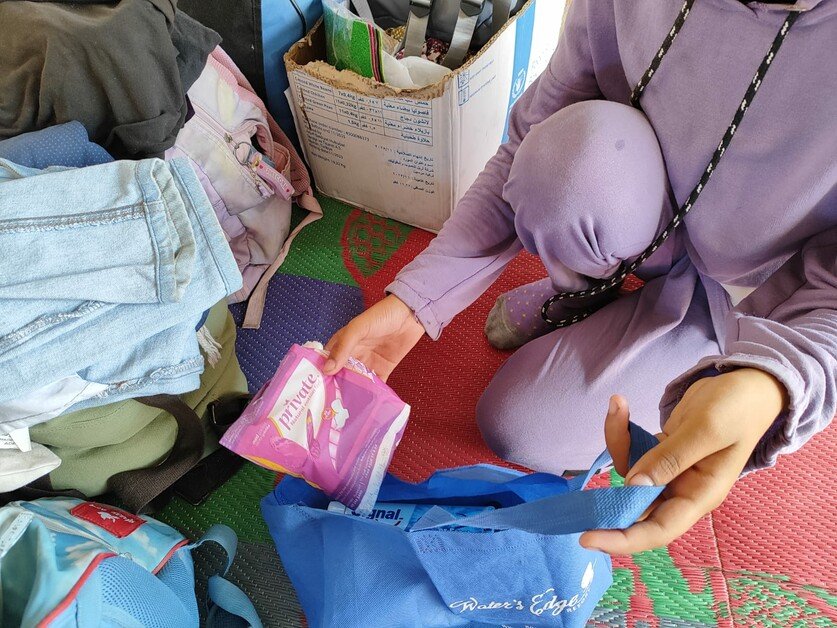
“Right now, we have no sanitary supplies. In the shelters, women must sometimes queue for hours to use the bathroom while feeling unwell and unable to dispose of tissues soaked in blood, as they do not have any hygiene pads.” -- Farah, Gaza
Periods don’t stop during a crisis.
But the challenges faced every month become even harder in an emergency situation such as an earthquake or conflict, especially when people are displaced from their homes.
- Period products become scarce and prices rise sharply
- Women and girls often have to wait for hours to access toilets or washing facilities
- Conditions are frequently unsafe, unclean or lacking privacy
Organisations like CARE prioritise the needs of women and girls in emergencies. We ensure access to menstrual products and safe sanitation even in the hardest situations.
What CARE International is doing to end period poverty
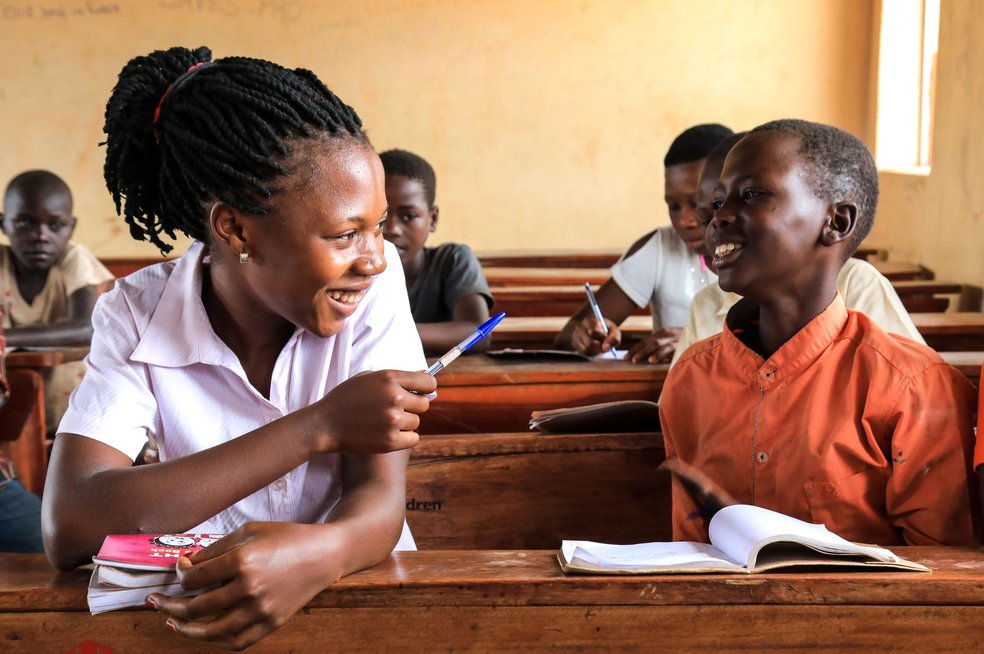
At CARE International UK, we believe that access to period products should be a basic human right, not a luxury. No one should have to live in period poverty.
Together with our local partners we:
- Talk about periods openly! We call it what it is, using every day, accessible language to fight stigma and normalise the conversation.
- Work with local partners, who know best what their communities need, to distribute appropriate, sustainable products, provide safe spaces for women and girls, share knowledge and provide services.
- Raise awareness of the inequality that exists for people around the world that drives period poverty.
- Call on decision-makers to prioritise menstrual hygiene needs in policies and budgets.
- Talk to men and boys about misconceptions about periods and how they can support menstrual health.
- Advocate for women’s rights around the world, including their right to make decisions about their own bodies.
How you can help end period poverty
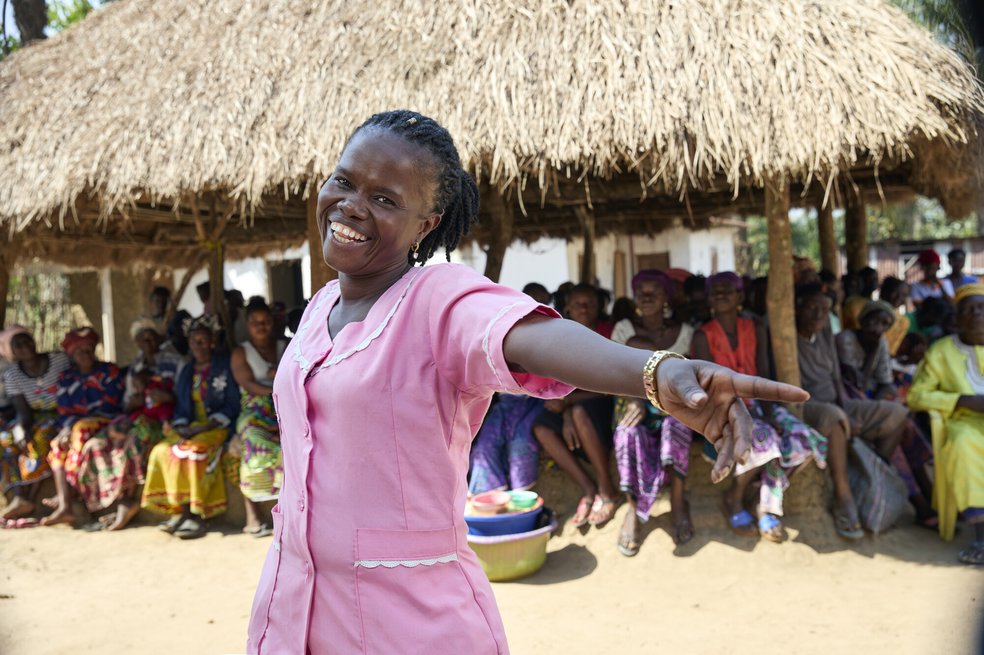
We can’t end period poverty without you. Will you join the movement to help end period poverty once and for all?
You can also:
- Raise awareness by talking openly about periods and challenging stigma.
- Donate to CARE – your support could help distribute period products and fund sanitation projects.
- Sign up to our mailing list and hear about more ways you can support women around the world who are leading the fight to end poverty.
CARE's work with women and girls
-
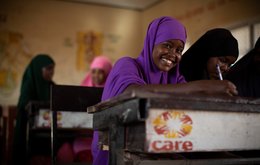
Education for girls
CARE supports marginalised children, especially girls, to go to and stay in school, succeed academically, complete their education, and obtain dignified work.
-

Eliminating gender-based violence
CARE supports survivors of gender-based violence to recover physically, psychologically and economically. We provide healthcare, counselling and livelihoods support.
-
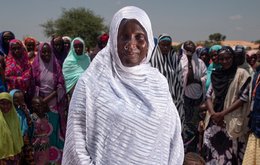
Strengthening women's voice and leadership
CARE advocates for the equal voice and leadership of women and girls in all areas of life.
